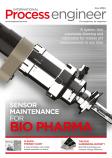With the advent of the Internet of Things making the world around us increasingly efficient and environmentally friendly, industrial sectors need to catch up to avoid costly and time consuming manually intensive processes. Mario Kelly looks at the changing face of waste water treatment
As the Internet of Things (IoT) continues to enhance our interaction with the world around us making us increasingly efficient and environmentally friendly, the pressure is on for businesses to make their processes more effective.
As consumers, we are increasingly living in a divided world. On the one hand, the consumer electronics sector is embracing the advent of the Internet of Things (IoT), a perfect example of this is LG’s latest offering - a smart fridge developed that tweets its owner when supplies are running low. On the other hand, industrial sectors are still relying on systems that utilise manually intensive processes that are costly and time consuming.
Elbow grease
Machinery and equipment used for a variety of applications, including food processing and industrial wastewater treatment plants, can quickly become clogged with fats, oils and greases (FOGs) as well as other types of organic waste. To make sure plants keep running efficiently, operators are regularly required to unclog drainpipes, grease traps and lift stations with nothing but a few hand tools, harsh chemicals and elbow grease.
Although this process eventually gets the job done, it is both manually intensive, damaging to the environment and often requires costly downtime to complete. Although businesses have become accustomed to these costs over time, a real competitive advantage lies at the end of tunnel for those businesses that can work safer, harder and smarter.
Get smart
To overcome this problem, NCH Europe's leading scientists and engineers have combined microbiology with engineering to develop BioAmp. A patented and computer controlled microbial fermentation unit, installed onsite, BioAmp delivers a tailored dose of active, naturally occurring bacteria directly into drains, grease traps and lift stations. The bacteria go to work immediately, reducing the build up of FOGs and organic waste in the effluent and eliminating odours.
This is where the opportunity exists to take an IoT approach. Factories can become smarter and waste water treatment plants more efficient. Accurate and automated dosing is only the tip of the iceberg. The BioAmp 5000 CCU also features automatic control, using the latest programmable logic controller (PLC) technology as well a GSM cellular connection so that key functions of the system can be remotely monitored for easy maintenance.
In many plants, we're already seeing the advent of augmented reality vision systems that can show operators internal processes at a glance and virtualisation software that can mirror a plant in real time using data from countless embedded sensors.
The nitty gritty
One of the biggest regulatory challenges industrial and waste water treatment plants face is compliance with rules on the discharge of effluent. Acceptable levels and fees associated with discharging effluent are determined using the Mogden scale, which measures various characteristics such as the chemical oxygen demand (COD), amount of suspended solids (SS), as well as the concentration of ammonia in some applications.
For smaller applications, BioAmp 750CCU is a climate controlled, indoor or outdoor delivery system that delivers 30 trillion live, safe and active bacteria every 24 hours, speeding up the natural breakdown of organic waste. For larger, more complex applications, BioAmp 5000 CCU is capable of delivering 500 trillion live, vegetative bacteria every 24 hours.
Cost savings
To generate considerable cost savings the larger BioAmp system features a heated growth tank that is fed with active FreeFlow, a specially formulated nutrient solution that incorporates a unique aeration system, which maintains dissolved oxygen at maximum levels.
Over time, BioAmp 5000 CCU can reduce the dissolved oxygen requirements of the system, so aeration pumps and motors do not have to work as hard, sludge volumes are drastically lowered and the organic loading on the system is reduced through dynamic digestion. This also reduces the volume of coagulants and flocculent chemicals required for effluent treatment.
A smart approach
Often criticised for being slow to change, businesses in the industrial sector can really benefit from the rise of the IoT by taking a smarter approach to the world of industrial waste water treatment. In doing so, we may hope to bridge the gap in a world divided by technology.
Mario Kelly is VP of the Waste Water Innovation Platform at global water, energy and maintenance solutions provider, NCH Europe.


















